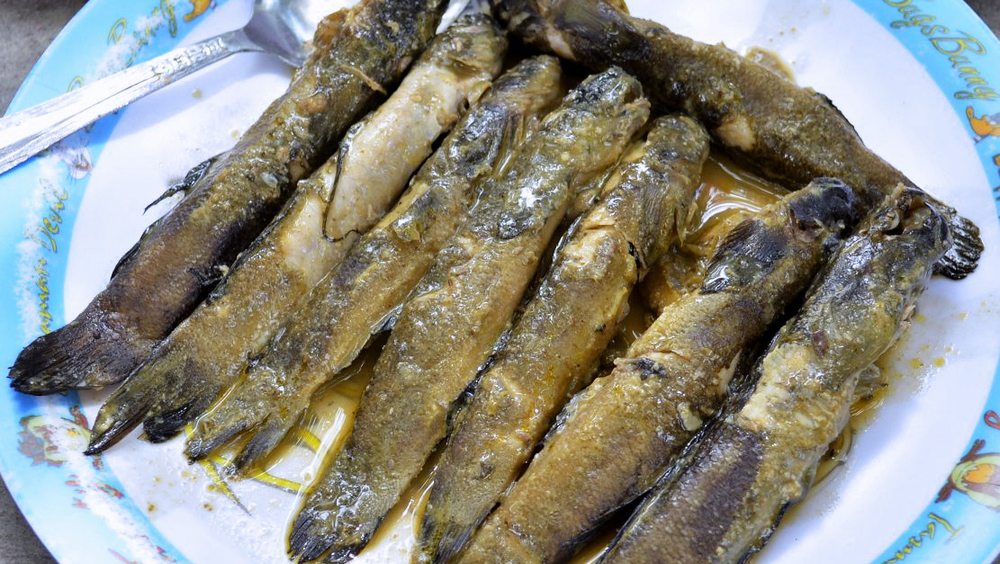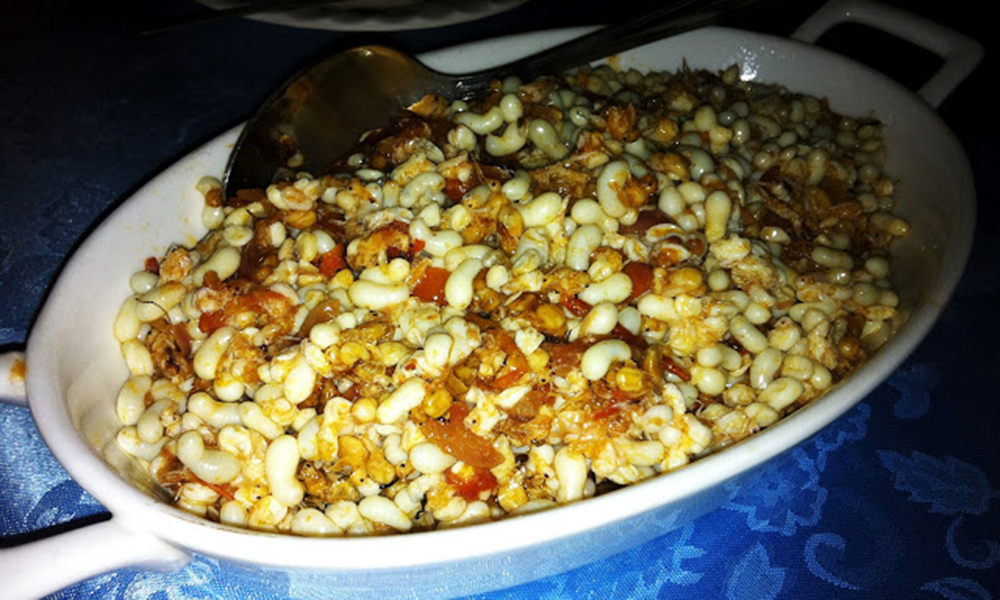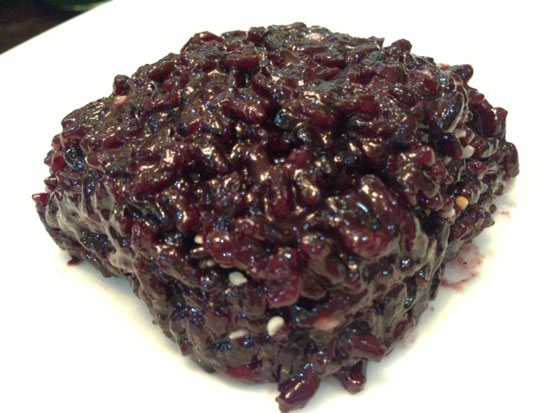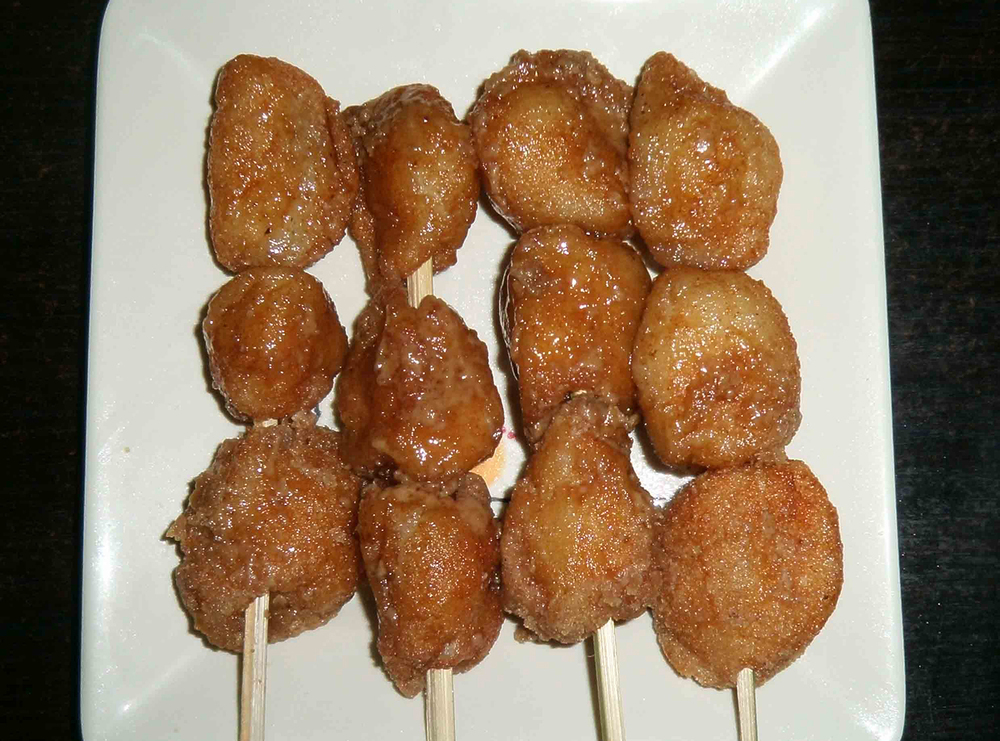If you are looking for a destination where you can do the biggest food trip of your life, the Cordillera Administrative Region should be one of your top choices!
A B R A
1. Lechon de Abra, similar with others, proudly have its crispy skin. However, it is still different with other lechon in the country. It is prepared with thinly sliced leaves and seasoned with lots of garlic, salt, and pepper.
 |
| Lechon de Abra. Image Source: lakwatserongtsinelas |
2. Sinuman and Patupat are the local version of rice cakes in Abra. The taste is even comparable to a world-class dessert! Sinuman is a triangular-shaped rice cake that is served as it is. Patupat on the other hand is served with muscovado sugar.
 |
| Sinuman. Image Source: lakwatserongtsinelas |
 |
| Patupat. Image Source: lakwatserongtsinelas |
3. Palileng is actually a name of a certain specie of river fish that is abundant in the province of Abra.
 |
| Palileng. Image Source: Positively Filipino |
4. Abuos or the eggs of big red ants is a famous exotic food in Abra especially during the summer season. These are collected through poking hole in the treetop nests of the red ants. Abuos are then sauteed together with garlic, onions, and tomatoes. Because of its rich and tangy taste, it is indeed a rare delicacy one should try!
 |
| Abuos. Image Source: Positively Filipino |
5.
Cascaron comes with molasses production. After the sugarcane is gathered, the tedious, dizzying and time-consuming going round-and-round of the carabao to move the wooden contraption that squeezes its juice follows. Then the juice is boiled in very high heat inside humongous vats called siliasi.
When the juice has turned a brown and sticky tagapulot (molasses), the malagkit (sticky rice) prepared earlier and shaped into small balls with coconut and sesame seeds, is poured into the vat. Once the balls float, they are cooked. They are retrieved with a contraption made out of a long bamboo pole with a roughly woven linaga or basket-like container at the end. - Positively Filipino
A P A Y A O
1. Pinikpikan is a common soup dish among the provinces in the Cordillera Region. However, instead of using native chicken, Apayao's version of Pinikpikan found its taste with native ducks. It is much more tastier and gives a much stronger soupy taste according to the locals.
 |
| Pinikpikan. Image Source: Choose Philippines |
2. Sininggub or the stir-fried red chili pepper, mixed together with a few sliced lemon leaves. Sininggub is served as an appetizer.
 |
| Sininggub. Image Source: Conner Apayao |
Other delicacies of Apayao:
Sinursur is a native course cooked in a young bamboo shoot. In the duration of its cooking, it is smashed with a stick to crush the contents until it is entirely squashed. It is either mixed with Atang (gabi leaves and stalk), Tuka’ (frog), Iwat (eel), Palilang (gobi) , Tangingi (Bean pods) and other combinations relished with plenty of sili that rouses the heat that interests one to take a dose.This dish is usually served in anyone’s home enjoyed by the whole family.Pinaltit, meanwhile is an appetizer consisting of ground pork cooked with coconut milk and garnished with plenty of chili powder and thin strips of pomelo leaves. This is a usual meal course in an Isnag’s daily menu.Sagket on the other hand is the native bagoong (fish sauce) of the people of Apayao. It is usually prepared from a fish called Palilang, a local specie of Goby. It is preserved for three days or more for a more savoring and aroma which is eventually cooked with plenty of sili together with selected vegetables. This symbolizes gallantry and bravery of the people of Apayao.The Binungor, another popular Kalinga dish is also making its way to every I-Apayao’s dining table, is an exotic dish of stir-fried snails eaten with bamboo shoots and siling labuyo.It is not for everyone, but if you want to try authentic Kalinga delicacy, binungor is the perfect thing to order.Agurong a common black freshwater mollusk with elongated spiral shell usually found in abundance in creeks and rivers are often cooked with coconut milk and lowland vegetables are among the popular native dishes of the province.- Roderick Osis
M T . P R O V I N C E
1. Etag, or the salted pork in Bontoc, Mountain Province, is a usual ingredient in many indigenous delicacies in the province. Etag is actually a product of preserving the meat hence, it's really flavorful!
 |
| Etag. Image Source: Manila Bulletin |
2. Biko that is made using the heirloon Mountain Violet sticky rice (locally known as Ominio) that are harvested directly from the terraces of the Philippines, can any other biko taste any better than that?
 |
| Tasty Biko made using the heirloom Mountain Violet Sticky Rice. Image Source: Pinoy Food Blog |
Other delicacies in the Mountain Province:
SAFENG - People unfamiliar with this dish better try this with stuffed noses. Actually, the smell is somewhat unsettling, but so is the Durian fruit, the bagoong, etc. What may be unsettling to one may smell nice to another. This dish is very, very, similar to the German Sauerkraut in terms of taste and smell. However, the ingredients are original (there are no Cassavas in Germany).
TAPEY - I have been to a lot of drinking sessions, and while I never make it a point to introduce myself as an Igorot, I hear during braggers' time that they've tasted Tapey. This site is featuring an all original recipe.
TSU-OM/DU-OM - Pinipig to the Tagalogs, but the Igorots have a better pinipig. If you have eaten Pinipig, you have not yet tasted the real TSU-OM. An explanation is included here.
CINAFA'Y FANIAS - Roast Monitor Lizard. Style copied entirely from the Late Daniel Ayochok. The leaves required here are found only in the Cordillera Mountain Ranges.
CINAFA'Y FECLAT - Roast Snake. Same as CINAFA'Y FANIYAS. Style copied entirely from the Late Daniel Ayochok. The leaves required here are found only in the Cordillera Mountain Ranges.
KINIDLO'Y MAKAN - Normally, this would simply be termed as "kinidlo" by the Bontocs. It is termed as "Kinal-oy", or "Kinaley" by the Kankana-eys. This is Rice with a Sweet Potato touch. I have first tasted this at Caluttit, Bontoc, Mountain Province, though, I have also eaten this at Buguias, Benguet. - Igorot Exotic Food


thankyou so much, you save my life
ReplyDeleteA big thanks to this site. Big help! 💞
ReplyDeleteThankyou very much 😊😊
ReplyDeletegreat thanks :)
ReplyDelete